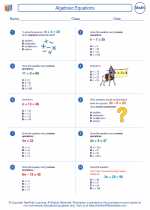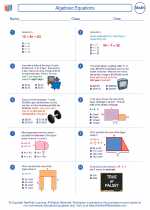Cartesian Coordinates
Cartesian coordinates are a system of locating points on a plane using two perpendicular number lines, called the x-axis and y-axis. The point where the axes intersect is called the origin, denoted by the coordinates (0, 0).
Parts of Cartesian Coordinates
X-Axis: The horizontal number line. Points to the right of the origin have positive x-coordinates, and points to the left have negative x-coordinates.
Y-Axis: The vertical number line. Points above the origin have positive y-coordinates, and points below have negative y-coordinates.
Quadrants: The plane is divided into four quadrants, labeled I, II, III, and IV, going counterclockwise from the upper right quadrant.
Coordinates of a Point
On a Cartesian plane, each point has a unique pair of coordinates (x, y), where x is the distance along the x-axis, and y is the distance along the y-axis.
Distance Formula
The distance between two points with coordinates (x1, y1) and (x2, y2) can be found using the distance formula:
√((x2 - x1)^2 + (y2 - y1)^2).
Practice Problems
- Plot the points A(3, 4), B(-2, 5), C(-1, -3), and D(2, -6) on a Cartesian plane.
- Find the distance between the points (1, 2) and (-3, 5).
Answer to Practice Problems
.◂Math Worksheets and Study Guides Sixth Grade. Algebraic Equations

 Worksheet/Answer key
Worksheet/Answer key
 Worksheet/Answer key
Worksheet/Answer key
 Worksheet/Answer key
Worksheet/Answer key
 Worksheet/Answer key
Worksheet/Answer key
 Worksheet/Answer key
Worksheet/Answer key
 Worksheet/Answer key
Worksheet/Answer key
